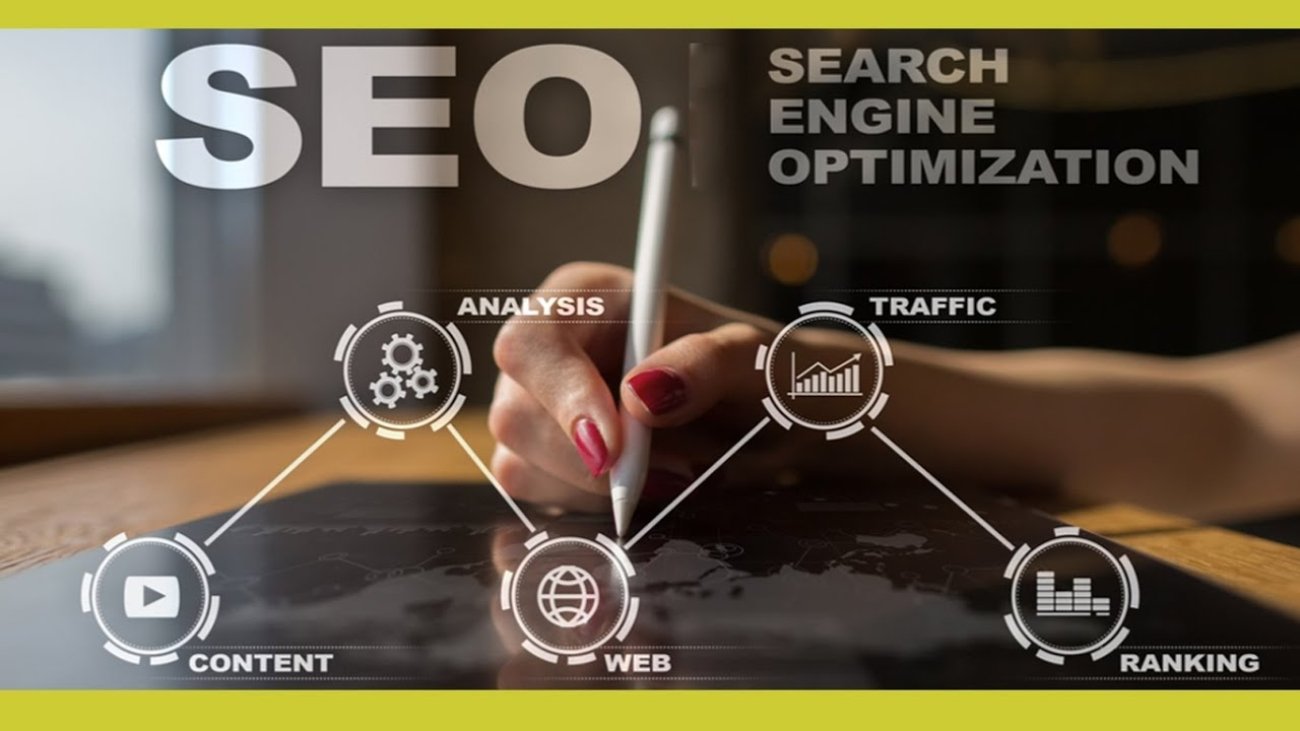Introduction:
Search Engine Optimization (SEO) is the process of improving your website’s visibility in search engine results pages (SERPs) like Google, Bing, and Yahoo. The goal? To attract organic (non-paid) traffic by ranking higher for keywords your audience is searching for.
In 2025, SEO is more than just inserting keywords into content it’s about providing relevant, trustworthy, and optimized digital experiences across all devices and platforms.
Whether you’re a business owner, content creator, developer, or student, understanding SEO is now a core digital skill. Let’s break down everything you need to know.
Why SEO Matters in 2025
SEO matters because:
-
93% of online experiences begin with a search engine
-
Organic search drives 53% of all website traffic
-
SEO delivers long-term ROI compared to paid ads
-
Ranking #1 can mean 10x more clicks than ranking #10
And in 2025, where AI-powered search engines and voice assistants are growing rapidly, SEO is evolving to keep up with user behavior.
Types of SEO
Understanding the types of SEO helps you structure your strategy correctly.
On-Page SEO
This involves optimizing content and HTML elements on your web pages.
-
Title tags
-
Meta descriptions
-
Headers (H1–H6)
-
Keyword usage
-
Image optimization
-
Internal linking
Off-Page SEO
Focuses on increasing your site’s authority and trust through external signals.
-
Backlinks
-
Brand mentions
-
Social shares
-
Guest blogging
Technical SEO
Ensures search engines can crawl, index, and render your site properly.
-
Site speed
-
Mobile responsiveness
-
URL structure
-
XML sitemaps
-
Schema mark up
Local SEO
Optimizes for location-based queries.
-
Google Business Profile
-
Local citations
-
Location-specific pages
-
Customer reviews
E-Commerce SEO
Tailored to product listings, category pages, and filters to improve sales.
-
Product schema
-
Optimized product descriptions
-
Navigation clarity
How Search Engines Work
Before we dive into SEO techniques, it’s important to understand how search engines like Google work:
Crawling: Bots (called spiders) discover new and updated content across the web.
Indexing: Content is stored and organized in Google’s database for future retrieval.
Ranking: When someone searches, algorithms determine which content is most relevant, authoritative, and useful.
Serving: Search results are presented instantly with snippets, images, FAQs, etc.
SEO helps you influence each of these stages, especially ranking.
SEO Foundations: Key Ranking Factors
There are 200+ ranking signals, but here are the most important in 2025:
High-Quality Content
Google’s Helpful Content System rewards content that:
-
Satisfies user intent
-
Offers original insight
-
Uses data and visuals
-
Answers related questions
Backlinks
Links from authoritative sites are like votes of confidence. Focus on:
-
Relevance of the source
-
Domain Authority (DA)
-
Anchor text diversity
Mobile-First Design
Most searches now happen on mobile. Your site must:
-
Be responsive
-
Load under 2 seconds
-
Have tappable elements
Page Experience (Core Web Vitals)
-
LCP (Largest Contentful Paint)
-
FID (First Input Delay)
-
CLS (Cumulative Layout Shift)
Keyword Optimization
Not stuffing, but using terms strategically in:
-
Titles and H1s
-
Meta descriptions
-
URLs
-
Body text
-
Alt tags
User Engagement Signals
Google tracks:
-
Bounce rate
-
Time on site
-
Click-through rates (CTR)
Schema Markup
Structured data helps Google understand content like:
-
FAQs
-
Recipes
-
Reviews
-
Events
Keyword Research: The Foundation of SEO
Before you optimize, you must know what people are searching for.
How to Do It:
-
Use tools like Google Keyword Planner, Ubersuggest, Ahrefs, or SEMrush
-
Find a mix of:
-
Short-tail keywords: e.g., “digital marketing”
-
Long-tail keywords: e.g., “how to start digital marketing for beginners”
-
-
Analyze keyword:
-
Volume
-
Difficulty
-
Intent
-
Keyword Intent Types:
-
Informational: “What is SEO?”
-
Navigational: “Ahrefs login”
-
Transactional: “Buy SEO course”
-
Commercial: “Best SEO tools for 2025”
Always align content format with the intent of the keyword.
On-Page SEO Best Practices
Once you have your keywords, here’s how to optimize:
Title Tag
-
Primary keyword near the beginning
-
Under 60 characters
-
Engaging format (e.g., “How to…” or “Top 10…”)
Meta Description
-
150–160 characters
-
Use primary + secondary keyword
-
Compel users to click
Header Tags (H1–H6)
-
H1 for main topic
-
H2/H3 for subtopics
-
Maintain hierarchy
Internal Links
-
Link to related articles
-
Use keyword-rich anchor text
-
Avoid broken links
Image Optimization
-
Compress images
-
Use descriptive file names
-
Add alt text with keywords
Off-Page SEO Techniques
Link Building
-
Create high-value content that earns links naturally
-
Do blogger outreach
-
Guest post on industry sites
Brand Mentions
-
Even unlinked mentions matter
-
Use tools like Google Alerts to track them
Social Proof
-
Shares and engagement can increase visibility
-
Social signals indirectly influence SEO
Technical SEO Essentials
Without proper technical health, great content won’t rank.
Checklist:
-
Secure your site with HTTPS
-
Submit an XML sitemap
-
Fix crawl errors in Google Search Console
-
Improve site speed with caching and CDN
-
Avoid duplicate content with canonical tags
-
Use robots.txt wisely
Local SEO Basics
For businesses targeting physical locations, local SEO is a must.
Key Steps:
-
Set up and verify Google Business Profile
-
Add local schema mark up
-
Build citations (e.g., Yelp, Bing, Yellow Pages)
-
Encourage Google reviews
-
Use location-specific keywords (e.g., “best dentist in Lahore”)
Measuring SEO Success
What gets measured gets improved.
Tools to Use:
-
Google Search Console: Clicks, impressions, CTR
-
Google Analytics 4: Traffic, bounce rate, conversions
-
Ahrefs/Semrush: Keyword rankings, backlinks
-
PageSpeed Insights: Performance metrics
KPIs to Track:
-
Organic traffic
-
Keyword rankings
-
Page load time
-
Conversion rate
-
Bounce rate
-
Average time on site
How Long Does SEO Take?
SEO is not instant. It’s a long-term game.
-
New websites: 6–12 months to see significant results
-
Established sites: 2–3 months for updates to show impact
Factors include:
-
Domain age
-
Competition level
-
Content volume and quality
-
Link profile
SEO Myths to Avoid
- “SEO is dead” It’s evolving, not dying
- “Stuffing keywords helps” It hurts rankings
- “Only the homepage matters” – Every page is an SEO opportunity
- “SEO is a one-time task” It’s continuous
Future of SEO: What’s Changing in 2025?
SEO in 2025 is driven by:
-
AI and Machine Learning (e.g., Google Gemini)
-
Zero-click searches and SERP features
-
Voice search optimization
-
Video SEO (YouTube + embedded)
-
E-E-A-T (Experience, Expertise, Authoritativeness, Trustworthiness)
To stay ahead, focus on authentic, high-value content backed by data and human expertise.
Final Thoughts
Search Engine Optimization is no longer optional it’s foundational. Whether you’re running a business, building a brand, or writing a blog, SEO is the engine that drives visibility, traffic, and growth.
By understanding what SEO is, how it works, and why it matters, you position yourself to thrive in today’s competitive digital landscape.
Start small. Stay consistent. And always optimize with the user’s needs and search engine logic in mind.
SEO’s Role in a Complete Digital Marketing Strategy
SEO doesn’t operate in a vacuum it complements every major aspect of digital marketing.
Whether you’re running email campaigns, paid ads, or social media promotions, SEO provides the organic backbone of long-term success. Unlike paid traffic, which disappears once the budget stops, SEO builds equity. That’s why SEO is often called “digital real estate” the better optimized your site, the more digital property you own on search engines.
How SEO Integrates with Other Channels:
-
Content Marketing: Blog posts and guides optimized for SEO attract organic traffic and help with lead nurturing.
-
PPC Campaigns: Keywords that perform well in SEO can inform ad strategy, reducing cost per click.
-
Email Marketing Organic SEO helps build lists by driving opt-in traffic through high-ranking content.
-
Social Media: SEO-focused content performs better on platforms like Pinterest and LinkedIn, where searchability matters.
A well-rounded strategy treats SEO not just as a traffic source, but as a branding, trust-building, and conversion-driving tool.
By mastering the fundamentals of SEO, you set a strong foundation for every other digital effort.

